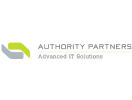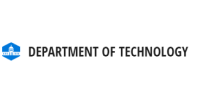












| Action | Who is Involved | Tools & Techniques | Estimated Duration |
|---|---|---|---|
| Assess your people capacity and organizational structure | Finance Team & Department Managers |
|
Org Structure Meeting: 1 day |
| Prepare a one-year budget that aligns with the plan | HR Team & Department Managers |
|
Budget Meetings |
| Roll out your strategy by communicating it to everyone in the organization | Marketing Team |
|
Often overlooked are the five key components necessary to support implementation: people, resources, structure, systems, and culture, collectively known as capacity planning. All components must be in place in order to move from creating the plan to activating the plan.
The first stage of implementing your plan is to make sure to have the right people on board. The right people include those folks with required competencies and skills that are needed to support the plan. In the months following the planning process, expand employee skills through training, recruitment, or new hires to include new competencies required by the strategic plan.
You need to have sufficient funds and enough time to support implementation. Often, true costs are underestimated or not identified. True costs can include a realistic time commitment from staff to achieve a goal, a clear identification of expenses associated with a tactic, or unexpected cost overruns by a vendor. Additionally, employees must have enough time to implement what may be additional activities that they aren’t currently performing.
Set your structure of management and appropriate lines of authority, and have clear, open lines of communication with your employees. A plan owner and regular strategy meetings are the two easiest ways to put a structure in place. Schedule meetings to review the progress monthly or quarterly, depending on the level of activity and time frame of the plan.
Both management and technology systems help track the progress of the plan and make it faster to adapt to changes. As part of the system, build milestones into the plan that must be achieved within a specific time frame. A scorecard is one tool many organizations use to incorporate progress tracking and milestones.
Create a cultural environment that connects employees to the organization’s mission and makes them feel comfortable. To reinforce the importance of focusing on strategy and vision, reward success. Develop some creative positive and negative consequences for achieving or not achieving the strategy. The rewards may be big or small, as long as they lift the strategy above the day-to-day so people make it a priority.
Good communication unlocks many organizational mysteries, so the fact that communicating your business strategy is critical to your success isn’t surprising. When the owner(s), executives, and managers continually demonstrate the link between strategy and specific business decisions, staff members are encouraged to think strategically as well. After the initial goal setting process is complete, devise a plan for communicating those goals. Your communication plan falls into these three scenarios, which are explained in the sections that follow:
Don’t assume that individuals will automatically buy in to your plan. What may seem clear to the planning team may not be clear to those not as involved in the strategy development. Give employees an opportunity to get involved on the back end of the process by setting up a feedback mechanism, such as a brown-bag lunch question-and-answer forum, a suggestion box, or a one-on-one meeting. Doing so gives employees a chance to respond as well. By gathering and responding to feedback, you facilitate employee buy-in and build a broader understanding of the organization’s goals and objectives. If you don’t get people to buy into the plan, the plan may ultimately fail. You can also take it a step further and share the strategic plan with other stakeholders, like investors, customers, alliance partners, vendors, and so on. An open approach can generate more helpful ideas and suggestions about the future of your business.
Rolling out your plan can range anywhere from a big high-profile campaign to a low-key announcement. Whatever you decide to do, make sure that everyone in your organization is informed. Certain groups of stakeholders may get complete copies of the plan, including background material in appendixes, whereas other groups may receive only the body of the plan without its appendixes.
Here are a few tips for involving people in your plan and having a successful rollout:
Launching goals with a major rollout isn’t enough. Goals must be visible and repeated to keep the commitment alive. Why not have some fun with your ongoing communication? You can find plenty of creative ways to keep your employees up-to-speed on the status of the plan. Taking it one step further, you can reinforce goals without coming across as a nag by adding humor, inspiring quotes, and customized encouragement to the messages. You can’t say thank you enough; keep that in mind when goals are attained. Here are just a few ways to ensure ongoing communication:












